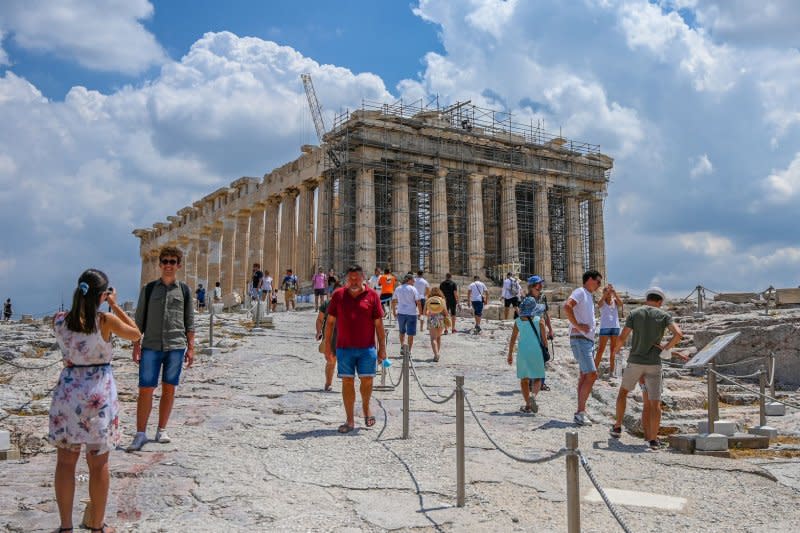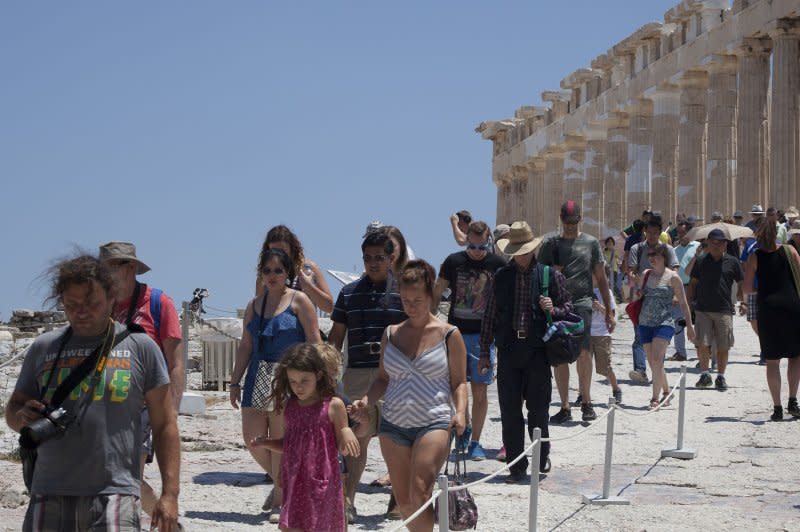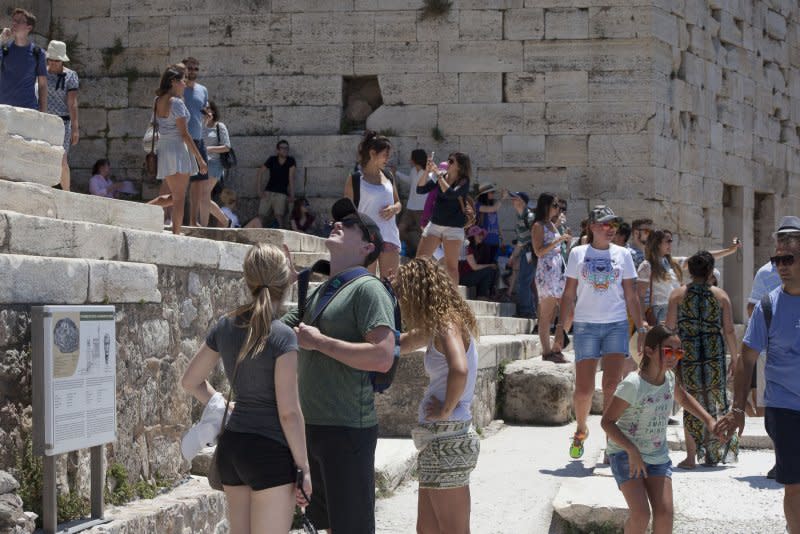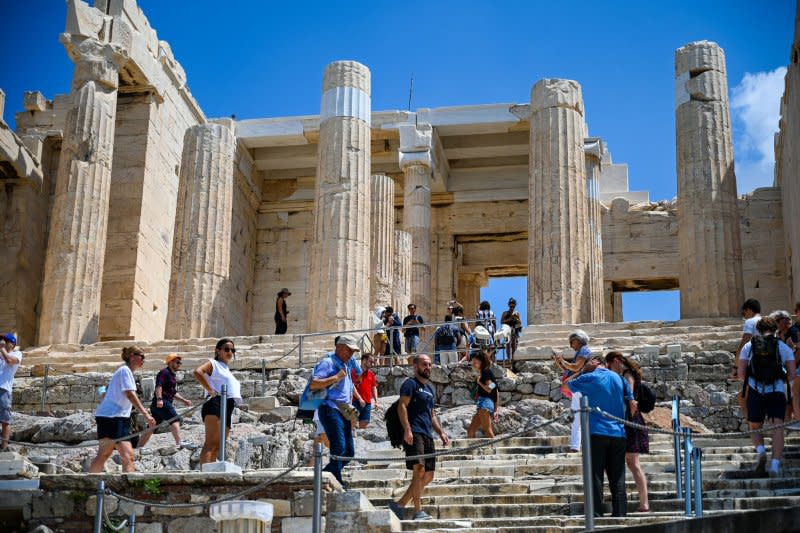Greece begins limiting tourists to Athens' Acropolis to prevent damage

Sept. 5 (UPI) -- In an effort to keep hoards of tourists from ruining the ruins in Greece, Athens' most famous landmark -- the Acropolis -- started limiting visitors Monday.
A new booking website now keeps track of tourists at the Acropolis while enforcing an hourly time slot to tackle overcrowding and preserve the archaeological site, which dates back to the fifth century B.C. and is one of the most renowned historical landmarks in the world.
"The Acropolis of Athens is the most striking and complete ancient Greek monumental complex still existing in our times," according to UNESCO.
"Obviously tourism is desirable for the country, for all of us," Greek culture minister Lina Mendoni told Greek radio last week. "But we have to find a way of preventing overtourism from harming the monument."
The new system, which rolled out Monday, will cap Acropolis visits to 20,000 tourists a day and will be used at other Greek sites, starting in April.

Access will be granted to 3,000 visitors between 8 a.m. and 9 a.m., followed by 2,000 each subsequent hour.
Mendoni said the Acropolis, which sits on a rocky hill in Athens and houses a collection of ruins, structures and artifacts including the Parthenon temple dedicated to the goddess Athena, currently sees up to 23,000 visitors a day, which she called an "enormous number."

The tourists create bottlenecks and "unpleasant conditions for the site, the visitors and the staff who are trying to accommodate this high volume of people," Mendoni added.
Tourism in Europe has surged since the pandemic, especially during the summer months, despite the high cost of airfare and hotels.

During the summer, the Acropolis was forced to close several times due to scorching heat, as well as smoke from wildfires in Greece.
The Acropolis is not the first European landmark to limit visitors following a crush of tourism. The Louvre in Paris now limits admissions to 30,000 a day, as Venice plans to introduce an entry fee for the fragile city of canals to curb the number of tourists who flock there.
"Destinations want to take more control over tourism and have tourism more on their terms," said Ko Koens, a professor of new urban tourism at Inholland University of Applied Sciences in Amsterdam. "Tourist visitation on the whole just puts wear and tear on these places."

